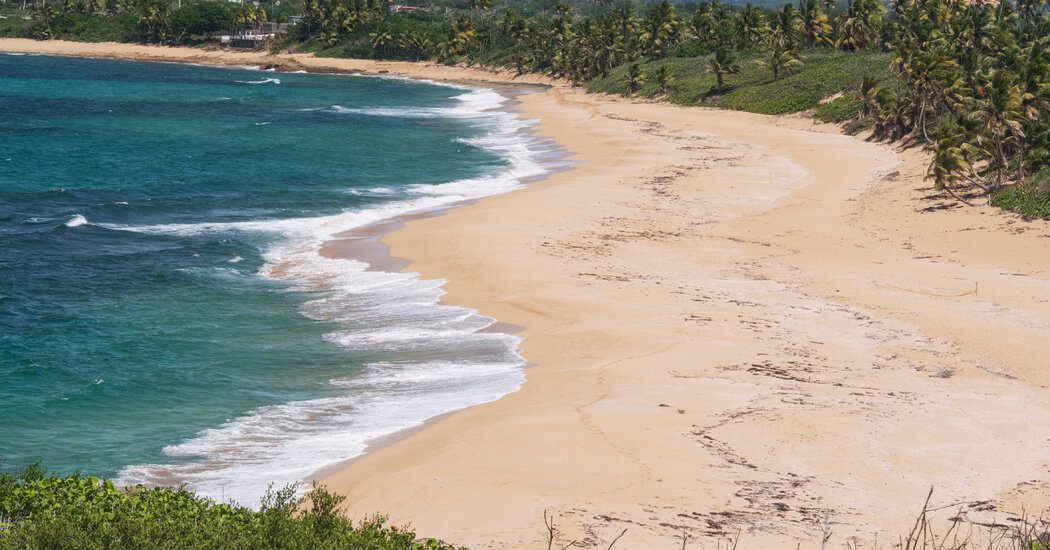On the northern coast of Puerto Rico — about an hour’s drive west of San Juan, off a wisp of a road threaded through dense green foliage — there exists a long, empty beach that has haunted my dreams for years. On Google Maps, it appears as Punta Caracoles Beach, but I have always thought of it as Perfect Beach.
Hidden from Route 681 by an impenetrable wall of palm trees, sea grapes and snake plants, the half-mile stretch of golden sand near the tiny outpost of Islote is tucked between a graceful bend in the shore and a rocky outcropping. A few houses anchor its far eastern end. The ocean is a visceral blue.
I used to spend hours there, immersing myself in the water, emerging to plop down in the coarse, shelly sand, exhausted, satisfied, letting the sun warm my bare skin.
At least, this is the beach as I remember it. Two decades ago, I had easy access to the place via the summer home of my first husband’s Puerto Rican family. Then we divorced, and later the family sold the land to a fellow from the U.S. mainland. Now, the beach beckons from the other side of a stranger’s private property.
I traveled to Puerto Rico in late May with the singular goal of finding a way back onto that beach (not to be confused with the popular Caracoles Beach, a few miles down the road). I recruited my ex-husband’s cousin Joaquín, a native Puerto Rican who had spent much of his youth on that beach. Together, we set out from San Juan on a sunny Friday afternoon with Perfect Beach — or another stretch of sand that could compare — in our sights.
A gap in the fence
Route 681 winds along some of the island’s most spectacular shoreline and, for that reason, is popular with bicyclists and motorcyclists. The road is also lined with restaurants and bars. On the weekends, it’s not uncommon to see party buses making their way along the road.
When we arrived in Islote, dense foliage along the highway complicated our effort to pick out the family’s old lot. But eventually, Joaquín slowed and nosed the car into a dirt driveway that was barricaded by orange netting. A sign in Spanish warned us not to trespass. In Puerto Rico, legally speaking, there are no such thing as private beaches — but you can’t cross private property to reach the sand.
We got back in the car and Joaquín drove slowly, waving a tailgater past. And then I spied a break — a three-foot-wide path running between two fences. “There!” I shouted. “Stop!” and he pulled over on the narrow, grassy…
Click Here to Read the Full Original Article at NYT > Travel…
